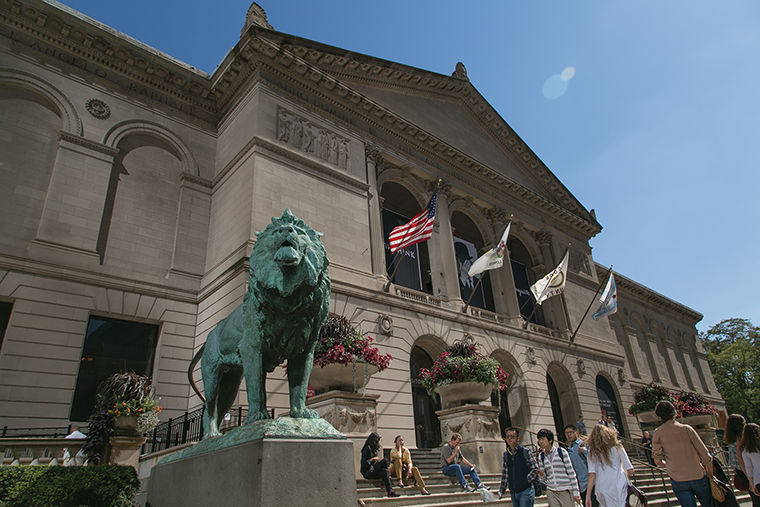Art Institute named top museum by TripAdvisor
The Art Institute of Chicago was named the no. 1 museum in the world by TripAdvisor on the site’s second–annual Traveler’s Choice Awards list.
September 29, 2014
On Sept. 16, the Art Institute of Chicago was named the No. 1 museum
in the world by popular travel site TripAdvisor as part of its annual
Traveler’s Choice Awards.
Kevin Carter, senior public relations manager at TripAdvisor, said the
Traveler’s Choice Awards are determined by a detailed analysis that is
done based on reviews posted on the website.
“Traveler’s Choice winners are based on millions of valuable reviews
and opinions on TripAdvisor from travelers around the world,” Carter
said. “Currently, TripAdvisor has more than 170 million reviews and
opinions on the site. It’s a tremendous scale of content that informs
our Traveler’s Choice Awards [every year].”
TripAdvisor has an extensive program for the Traveler’s Choice Awards,
including lists for hotels, restaurants and attractions, Carter said.
This is the second annual awards for the attractions list, which
includes museums like the Art Institute.
Zoë Ryan, the Institute’s chair and curator of Architecture and
Design, said the museum’s collection makes it special. The museum is
known for its impressionist collection, but also has galleries that
feature modern, contemporary, Greek and other types of art. The museum
also displays works from lesser-known, emerging artists,
Ryan said.
“We have a project space for architecture and design, which shows
works by young designers and thinkers,” Ryan said. “We’re really
trying to identify who is doing really important work now.”
Tim Cozzens, the interim chair of the Art + Design Department,said the
quality of the collection at a museum and whether it meets the
viewer’s expectations are the most important part of a museum
experience. Good lighting, ease of navigation, cafes and bookstores
are also amenities he sees as beneficial for adding to the consumer
experience at the museum, Cozzens said.
Ryan said the Art Institute is constantly working on improving the
guest experience so that the museum can uphold its reputation. He said
all departments at the museum take comments from the Internet and
individual galleries very seriously, Ryan said. The museum is
currently working on installing more comfortable seating in the
galleries to keep up with the ever-changing nature of museums.
“People are coming and they’re staying for a long time and they are
looking at things on their smartphones,” Ryan said. “You want places
where you can hang out and have more of a social experience.”
The increased use of the Internet and social media are two major
changes that are helping transform the museum experience and bring in
a bigger audience to the Art Institute, Ryan said.
“What I think is really interesting is to see how our museum is
different from other museums or what other people are looking at,”
Ryan said. “We can gain a lot of information from that as much as the
general public can from these [online] communities that
follow museums.”
Ryan said the Art Institute is currently engaged in digitizing the
museum’s entire collection. However, displaying the art on the
Internet is important for providing more information and access to
extremely detailed photos for the museum’s growing audience, Ryan
said. The Art Institute is also using technology to test more
interactive electronic devices to enhance the visitor experience in
the museum, Ryan said.
“Through testing out different types of technology in the museum, we
can really quickly see what type of information people want to look
at,” Ryan said. “[We can see] what types of artwork benefit from
having iPads in the galleries or videos or other types of information.”
Technology has overrun the world, changing not only our lives but also
changing the museum world tremendously, Ryan said.
“Nothing will replace the physical proximity of being in a space with
art,” Ryan said. “Hopefully, [technology provides not only] a broader
understanding, but also increases awareness and the understanding that
art has an important role in our everyday lives.”








